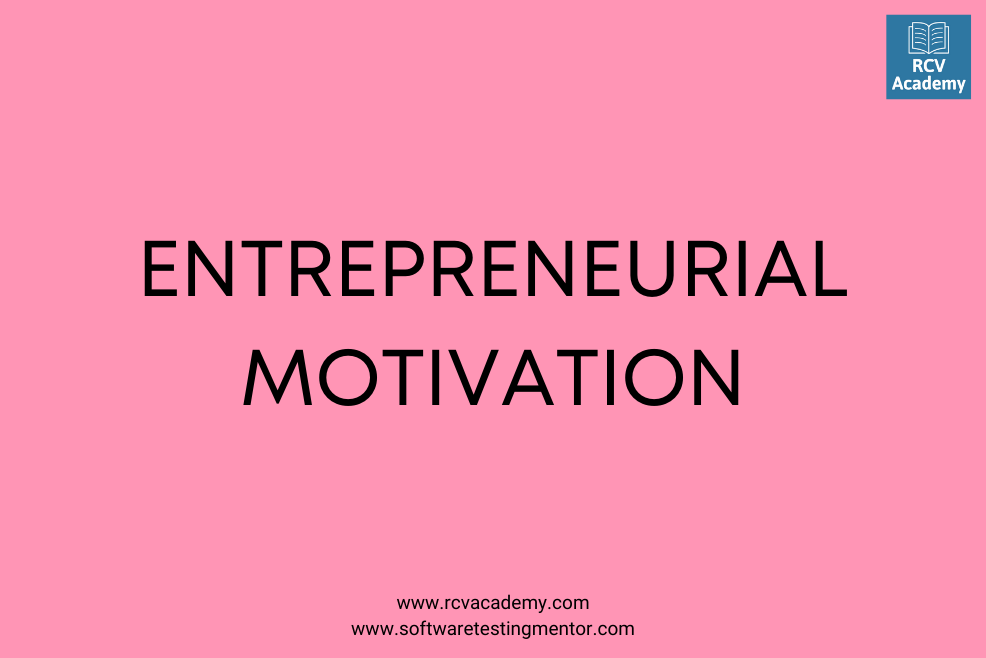In this tutorial, we will learn about setting up a business enterprise when they keep planning to do something of their own such as opening small entrepreneurship units.
It is, therefore, necessary to understand the issues involved in it. Several educated youths roam around with that the feeling that their dreams do not match with the existing realities of their immediate environment.
It is essential to start assessing the existing opportunities, strengths, and weaknesses and build one’s existing skills. Materializing one’s dream into prepositions is the art of an entrepreneur.
In a way, your clients are their won masters and servants at the same time. It may sound great but requires a set of procedures to be adopted and implemented.
It is conducted by national or local industrial associations as well as departments and institutions specializing in this area. It is important to note that the entrepreneurial spirit by one’s confidence and interest in making through enterprise rather than a salaried job. If the attitude is right, one will undoubtedly succeed.
Steps
In Setting Up An Enterprise:
It has found that people engage in entrepreneurship because of two reasons:
- The individual wanted to take advantage of the perceived opportunity in the economy.
- The individual did not have any better options for making a living.
The former are called “opportunity entrepreneurs” and the latter “necessity entrepreneurs.” This classification based on whether the enterprise is:
- An autonomous startup
- An owner-managed unit.
- A startup as part of one’s employment.
In the above subsections, we shall describe the necessary steps required in setting up an entrepreneurship unit. The basis of starting anything new is to have a clear and concise understanding of the existing scenario on the issue concerned. It is the foundation of the first step in starting the project.
Collection Of Information:
The first and foremost step is to collect information about the existing units in the field concerned. It can be done by going through the telephone directories or by visiting the registrar’s office of the small scale units. It will help your clients have an idea regarding the field they are about the venture to.
It will also provide them with a platform where they can weigh the pros and cons of the situation—the best scope of entrepreneurship offered by all the sectors that required a highly skilled workforce.
Organizing The Information:
The second step will be to arrange the information. It will help the clients to know the real minimal prerequisites for opening the use. It requires quantifying the problems to draw upon an inventory of resources and their use and to make projections.
You need to develop a checklist for ready reference for your clients of the available resources in terms of space, money, training, and human resources.
Upgrading Vocational Skills:
It is common to mention that it is better to teach a man how to fish than to provide fish every day. There is a need to building implementing your project of setting up an use.
Vocational and professional education and training are straddling different industries provided to enhance the skills competency of practitioners and foster their attainment of multi-dimensional skills.
Financial Implication:
The fourth step is to study the financial implications involved and to search for financial assistance available in the field. Finance related issues include the source, availability, estimation, and management of working capital.
One should have the basic knowledge of preparing income and expenditure statement. One should also go for the insurance cover provided by the concerned financial institutions.
Commercially providing financial services is gaining a lot of faith these days; there are well-planned credit schemes available at the blanks and cooperatives. Seeking loans can help you sustain your use.
The most important source for funds for an entrepreneurial startup has traditionally been the personal resources of entrepreneurs. The banks and financial institutions come in the second position.
Interestingly, government schemes also play an essential role in providing funds for startup. People also take loans to form close family members, neighbors, relatives, friends, and colleagues at the workplace.
Market Trends:
The fifth step involves exploring existing market trends. It is crucial because there is a demand for their finished products; their use will be a failure in terms of time and money.
One needs to help clients conduct the feasibility study of the market and develop contacts with the distributors in the market rather than remain confines within the regional boundaries.
They must become proactive and competitive. They also have to make use of IT for their successful survivor and growth.
Market Assessment:
Whether it is about starting a new business or launching a new product, conducting a market assessment is essential to know whether there exists any demand for the idea.
Knowing the market’s needs provides vital information that is essential in further molding the design and developing a plan map. The owner is forced to reevaluate his strategy and determine if there is room for another player.
Conducting a market assessment helps to:
- To prepare and enter a new market.
- Launch a new product or service.
- When we start a new business.
The marketing assessment process can lay down into six steps:
- It is defining the problem.
- Analysis of the situation.
- It is obtaining data that is specific to the problem.
- Analysis and interpreting the data.
- We are fostering ideas and problem-solving.
- We are designing a new plan.
Defining The Problem:
Defining the problem is essential for conducting a successful market analysis. It may require a great deal of time but is well worth the time and energy employed.
Defining the objectives is identifying the problem, which is equivalent to a successful marketing campaign. Many entrepreneurs tend to waste valuable time performing proper research on the wrong issue.
Analyzing The Situation:
An analysis of the situation is an informal survey of what information is available in the problem area. The report will help in defining the problem and ascertain the need for additional information. This process entails informal talks with informed people.
Informed individuals can be others in the company or outsiders with knowledge about the industry or products. In some instances, customers contacted to provide information. When the marketing manager is unfamiliar with the situation, the analysis step is of primary importance.
It is essential to understand the problem area, including the nature of the target market, competition, the marketing mix, and the external environment. The analysis should focus on primary and secondary research.
- Primary research: Primary research is research that is proactively created for a specific purpose. Fundamental analysis may include focus groups, qualitative surveys, and phone interviews.
- Secondary research: Secondary research is research that has already been conducted for other purposes. From it, valuable information can glean. Secondary research can found in libraries, online, through periodicals, books, etc.
Once all the information required is known, make sure the market should be receptive to the product or service. The widget might be the most innovative on the market. But if the target doesn’t think, so it leads to the nowhere zone.
Obtaining Data Specific To The Problem:
The next step requires gathering primary research and performing a formal research project. Many approaches can use to collect primary data.
The purpose is for the investigation to identify the customer’s behavior patterns in response to a particular product right or any idea. Research can be done in a person or through a survey.
Questioning can be qualitative or quantitative. Another research option is to use observation of customers and their purchases or utilization of a product or a service.
Data Analysis And Interpretation:
Data analysis and interpretation are critical in analyzing a market. By merely conducting research work and collating the data is no help useless explained.
The information needs to be used in a constructive way to define a problem and establish a plan. In quantitative research, this step must often involve statistics.
The marketing manager must be able to draw valid and reliable conclusions from the conducted study. Despite the use of the correct statistical tool and accurate calculations, the interpretation could be wrong.
That is required that the analysis can be done in support of the experts, and the right results are craft.
Fostering Ideas And Problem-Solving:
At this step, the research results to make marketing decisions. The findings should apply in marketing planning.
If the research doesn’t provide the information necessary to make these decisions, the company, whether small or large, has wasted its time, money, human resources on unnecessary data.
Marketing Plan:
The six-step process of a market analysis is critical in designing the market plan tailored to the product or service. The process can be beneficial in a significant but previously unrecognized problem.
By finding and focusing on the real problem, the researcher and business owner can move quickly to a useful solution.




